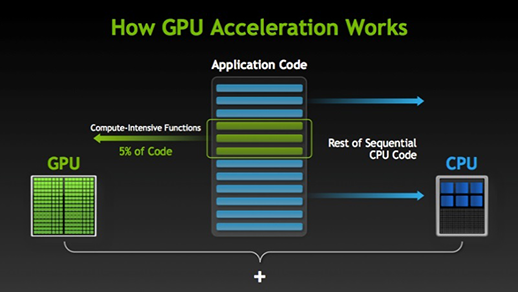History of Computers - Graphics Processing Unit
Page created by: Vijay Patel
Introduction
A graphics processing unit, also known as a GPU, is an addable computer part that can be added to a computer. "The technical definition of a GPU is "a single-chip processor with integrated transform, lighting, triangle setup/clipping, and rendering engines that is capable of processing a minimum of 10 million polygons per second."" The first dedicated graphics card was made by NVIDIA, a company that began in the early 1990's. Another prominent graphics card company is AMD.

Overview
The world's first GPU was the Ge Force 256, made in 1999. It was made by NVIDIA, and had new features never seen before in a computer. It featured a 256 bit rendering engine that was better than any other graphics processor at the time. [1] NVIDIA led the graphics area of computing following this invention, and still are beieived to lead the industry today. Today, GPU's have become much more powerful and have become more able to handle larger tasks and jobs. basically, as said in the description, the GPU handles the graphics portions of certain programs or games. Extreme gamers require a high end graphics card to be able to play games that require a lot of work from the GPU. The CPUand the GPU work together as shown in the chart below.

Parts
The GPU is made of many important parts. One of the parts is the output channels on the video card. Some new video cards come with a built in fan or another way to cool, such as heatsinks. It also has a PCI plug in to put into the motherboard. Also, the video cards have anywhere from a few megabytes to dozens of gigabytes of ram for storing data required for graphics.[2]
Significance
GPU's are very important as they allow for a higher level of computing, and a higher level of processing graphics. Without them, we could not play such advanced games or create real life like simulations today.